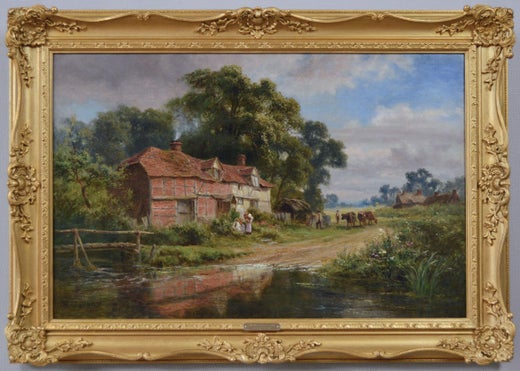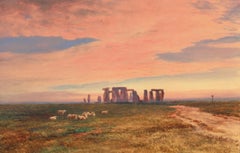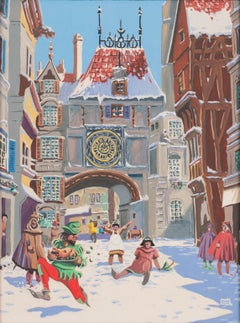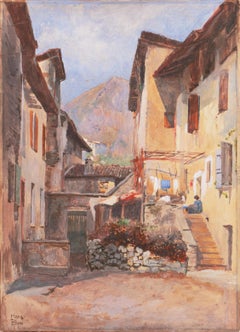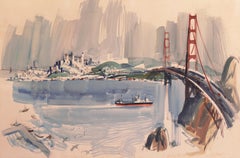Robert Gallon'Stonehenge at Sunset', Royal Academy, RSBA, Benezit, Wiltshire, Druid, CelticCirca 1880
Circa 1880
About the Item
- Creator:Robert Gallon (1845 - 1925, British)
- Creation Year:Circa 1880
- Dimensions:Height: 15 in (38.1 cm)Width: 23 in (58.42 cm)Depth: 0.13 in (3.31 mm)
- Medium:
- Movement & Style:
- Period:
- Condition:age-toning; shows well; unframed.
- Gallery Location:Santa Cruz, CA
- Reference Number:1stDibs: LU34413785062
Robert Gallon
Robert Gallon was born in England in 1845. One of the finest late Victorian landscape painters, Gallon’s skill and attention to detail was comparable to that of his contemporary Benjamin Williams Leader. Between 1868–1903, Gallon exhibited 32 works at the Royal Academy of Arts and 27 at the British Institution in London.
You May Also Like
1830s Romantic Landscape Drawings and Watercolors
Watercolor, Board
20th Century Landscape Drawings and Watercolors
Watercolor, Illustration Board
1920s Post-Impressionist Landscape Drawings and Watercolors
Watercolor, Illustration Board
1970s Pop Art Landscape Drawings and Watercolors
Plastic, Paper, Mixed Media, Watercolor, Illustration Board, Pencil
1930s American Modern Figurative Drawings and Watercolors
India Ink, Watercolor, Illustration Board
1930s American Modern Figurative Drawings and Watercolors
India Ink, Watercolor, Illustration Board
1940s Futurist Landscape Paintings
Gouache, Illustration Board
1960s Surrealist Landscape Drawings and Watercolors
Tempera, Watercolor, Illustration Board, Pencil
1960s American Realist Landscape Drawings and Watercolors
Ink, Gouache, Illustration Board
1880s Realist Landscape Drawings and Watercolors
Paper, Watercolor, Illustration Board
More From This Seller
View AllLate 19th Century Romantic Landscape Drawings and Watercolors
Watercolor, Illustration Board
1960s Landscape Drawings and Watercolors
Gouache, Illustration Board
1910s Impressionist Landscape Drawings and Watercolors
Paper, Watercolor, Gouache, Illustration Board
1960s Modern Landscape Drawings and Watercolors
Watercolor, Gouache, Illustration Board
1930s Landscape Drawings and Watercolors
Watercolor, Gouache, Illustration Board
1930s Landscape Drawings and Watercolors
Watercolor, Gouache, Illustration Board
